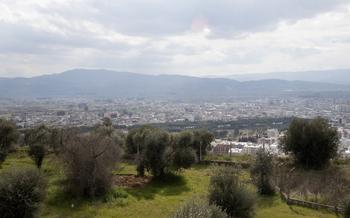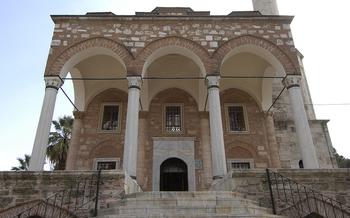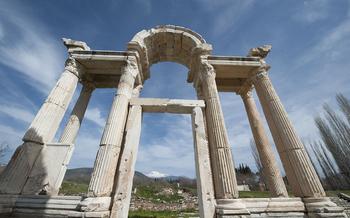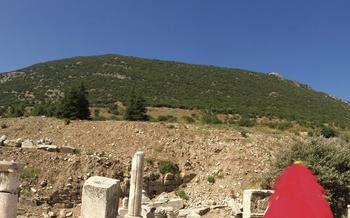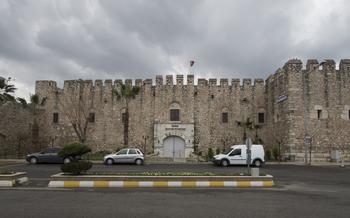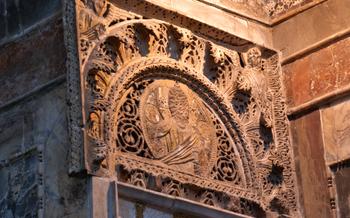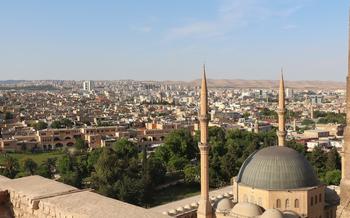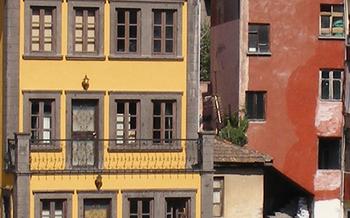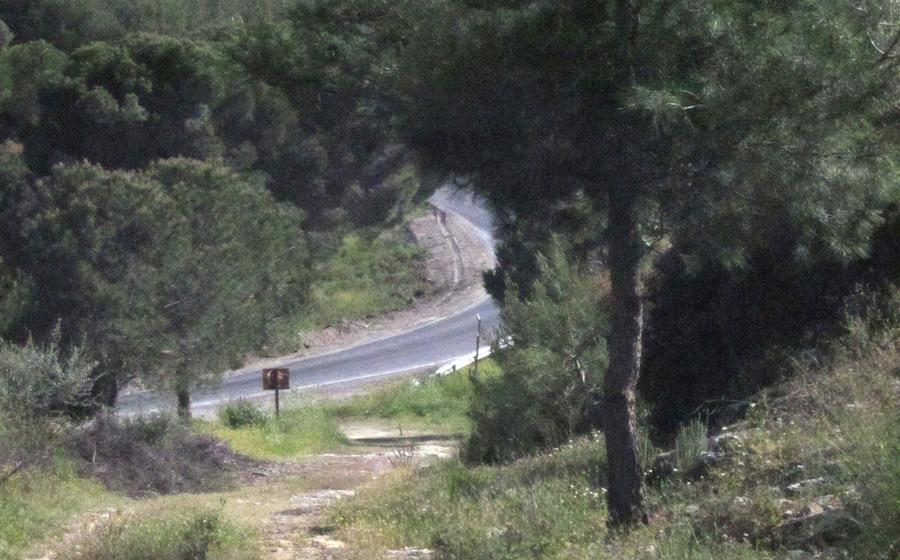
House of the Virgin Mary
- The House of the Virgin Mary: A Pilgrimage Site for Christians and Muslims
- Historical Background
- Architectural Features
- Religious Significance
- Interfaith Dialogue
- Cultural Significance
- Visitor Experience
- Pilgrimage Season
- Local Customs and Traditions
- Nearby Attractions
- Accommodation and Dining
- Photography and Videography
- Accessibility for Differently-Abled Visitors
- Insider Tip: A Hidden Gem of Faith and History
The House of the Virgin Mary: A Pilgrimage Site for Christians and Muslims
The House of the Virgin Mary, also known as the Meryemana Evi, holds a profound significance for both Christians and Muslims, drawing pilgrims and visitors from around the world. According to Christian tradition, the house is believed to be the final resting place of the Virgin Mary, mother of Jesus Christ. Muslims, on the other hand, revere the site as the home of Meryem, the mother of the prophet Isa (Jesus). The house is a testament to the shared history and religious beliefs of these two major faiths, promoting interfaith dialogue and mutual understanding.
The architectural features of the house are a unique blend of Christian and Islamic elements, reflecting the site's rich history. The building incorporates a small stone house, believed to be the original dwelling of the Virgin Mary, along with a later-constructed chapel and mosque. The interior of the house is adorned with icons, candles, and other religious artifacts, creating a serene and contemplative atmosphere for pilgrims and visitors.
The house has become a symbol of interfaith harmony and understanding, serving as a bridge between different cultures and religions. Its significance extends beyond religious boundaries, promoting peace and cooperation among people of diverse beliefs. The site has hosted numerous interfaith events and gatherings, bringing together religious leaders, scholars, and community members to foster dialogue, promote mutual respect, and build bridges of understanding.
Historical Background
The House of the Virgin Mary holds immense historical significance, rooted in the lives and journeys of the Virgin Mary, revered by both Christians and Muslims. According to Christian tradition, the Virgin Mary, accompanied by the Apostle John, traveled from Jerusalem to Ephesus, where she spent her final years. The discovery of the house attributed to the Virgin Mary in Ephesus is a testament to the convergence of Christian and Islamic beliefs.
In the 19th century, German nun, Sister Anne Catherine Emmerich, had a series of visions, which led to the identification of the house in Ephesus. These visions prompted a French priest, Abbé Julien Gouyet, to search for the house, and in 1891, he successfully located the ruins of a small stone dwelling, which corresponded to Sister Emmerich's descriptions.
Subsequent archaeological excavations and research have further substantiated the authenticity of the house. Discoveries such as a water cistern, an altar, and a niche for an oil lamp have provided tangible evidence supporting the belief that this was indeed the place where the Virgin Mary spent her final days.
Architectural Features
The House of the Virgin Mary stands out for its unique architectural design and construction. Built in the 1st century AD, the house features a rectangular plan with a single apse, a semi-circular recess at the eastern end of the building. The apse is believed to have been the location of the Virgin Mary's bed and is considered a sacred space within the house.
Distinctive architectural elements of the house include an altar, niches, and a water fountain. The altar, located in the center of the apse, is believed to have been used by the Virgin Mary for prayer and meditation. Niches, or small recesses in the walls, can be found throughout the house and are believed to have been used for storing religious objects or offerings. A water fountain, located outside the house, is said to have miraculous healing properties and is a popular spot for pilgrims to drink from or wash their hands.
The symbolism and religious significance of the architectural features of the House of the Virgin Mary are profound. The apse, representing the Virgin Mary's bed, symbolizes her role as the mother of Jesus and the source of divine love and protection. The altar represents the sacredness of the house and the presence of God within it. The niches symbolize the Virgin Mary's humility and devotion, as she used them to store her personal belongings and offerings to God. The water fountain symbolizes the purity and cleansing power of faith, as pilgrims believe that drinking from it or washing their hands in it can bring healing and spiritual renewal.
Preservation efforts and restoration work have been undertaken at the House of the Virgin Mary to maintain its historical integrity and ensure its continued accessibility to pilgrims and visitors. The site has been declared a UNESCO World Heritage Site, recognizing its outstanding universal value and the need to protect it for future generations.
Religious Significance
The House of the Virgin Mary holds immense religious significance for both Christians and Muslims. For Christians, it represents the final resting place of Mary, the mother of Jesus, and is a site of pilgrimage and devotion. Pilgrims from all over the world come to pay homage to Mary and seek her intercession. The house is also revered by Muslims, who believe that Mary was a holy woman and a descendant of the prophet Abraham. They visit the site to pay their respects and seek blessings.
The house has become a symbol of interfaith dialogue and understanding. It serves as a reminder of the common ground shared by different faiths and the importance of respecting each other's beliefs. The site has hosted numerous interfaith gatherings and events, bringing together people from different backgrounds to promote understanding and cooperation.
The religious significance of the House of the Virgin Mary is deeply felt by visitors. Many pilgrims share stories of profound spiritual experiences and a sense of peace and tranquility at the site. The house is a place where people of different faiths can come together to honor their beliefs and find common ground.
Interfaith Dialogue
The House of the Virgin Mary stands as a powerful symbol of interfaith harmony, fostering dialogue and understanding between different faiths. This sacred site serves as a platform for initiatives aimed at promoting cooperation and peacebuilding among people of diverse religious backgrounds. Interfaith events and gatherings are frequently held at the house, bringing together individuals from various faith communities to engage in meaningful conversations and share their perspectives. These initiatives emphasize the common ground that unites people of faith, encouraging them to work together towards a more inclusive and harmonious world. The House of the Virgin Mary serves as a testament to the transformative power of interfaith dialogue, demonstrating the potential for different religions to coexist peacefully and contribute to a better understanding of one another.
Cultural Significance
The House of the Virgin Mary stands as a testament to Turkey's rich cultural heritage, embodying the fusion of Christian and Islamic influences that have shaped the country's history. The site is a living example of interfaith harmony and understanding, a place where different cultures and beliefs converge. The house's unique architecture, blending Byzantine and Islamic elements, reflects the region's diverse cultural heritage. Over the centuries, the site has become a symbol of tolerance and coexistence, inspiring pilgrims and visitors from around the world. It plays a significant role in shaping local traditions and beliefs, fostering a sense of cultural identity and pride among the Turkish people. The preservation and celebration of cultural diversity in Turkey are essential to understanding and appreciating the country's rich tapestry of traditions and customs. The House of the Virgin Mary stands as a reminder of the importance of embracing and respecting cultural differences, promoting unity and harmony within society.
Visitor Experience
Visiting the House of the Virgin Mary is a profound and moving experience for pilgrims and tourists alike. Upon arrival, visitors are greeted by a serene and tranquil atmosphere that invites contemplation and reflection. The site is well-maintained, with manicured gardens and pathways leading to the house. Visitors can wander through the grounds, taking in the natural beauty and the historical significance of the place.
Inside the house, visitors will find a small and intimate chapel, adorned with religious iconography and candles. The atmosphere is one of reverence and devotion, as pilgrims offer prayers and light candles in honor of the Virgin Mary. Visitors are encouraged to maintain a respectful silence and to observe proper etiquette while inside the chapel.
It is important to remember that the House of the Virgin Mary is a sacred site for both Christians and Muslims. Visitors should dress modestly and behave respectfully, avoiding loud noises or disruptive behavior. Taking photographs or videos inside the chapel is generally not permitted, but visitors may take photos of the exterior of the house and the surrounding grounds.
Pilgrimage Season
The pilgrimage season to the House of the Virgin Mary holds immense significance for both Christians and Muslims. During this time, the site transforms into a hub of spiritual devotion and interfaith harmony. Christians celebrate the Feast of the Assumption on August 15th, marking the day when the Virgin Mary is believed to have ascended to heaven. This period attracts a multitude of Christian pilgrims who flock to the house to pay homage and offer prayers.
For Muslims, the pilgrimage season coincides with the holy month of Ramadan. During this time, Muslims from around the world come to the house to seek blessings and engage in spiritual reflection. The site exudes an atmosphere of profound reverence and unity as people from different faiths gather to celebrate their shared spiritual connection.
Special events, masses, and ceremonies are held throughout the pilgrimage season, creating a vibrant and immersive experience for visitors. Pilgrims participate in prayers, processions, and rituals that honor the life and legacy of the Virgin Mary. The atmosphere is one of deep devotion, tranquility, and spiritual renewal.
When planning a pilgrimage to the House of the Virgin Mary during the pilgrimage season, it is essential to consider the influx of visitors and make arrangements accordingly. Accommodations should be booked in advance, and visitors should be prepared for crowds and potential delays. It is also advisable to dress modestly and respectfully, adhering to local customs and traditions.
By immersing oneself in the pilgrimage season at the House of the Virgin Mary, visitors can witness the profound spiritual significance of the site and experience the power of interfaith dialogue and understanding. It is a truly transformative journey that offers a deep connection to history, faith, and the shared human experience.
Local Customs and Traditions
When visiting the House of the Virgin Mary, it is essential to be mindful of local customs and traditions to ensure a respectful and meaningful experience. Here are some insights to help you understand and navigate the cultural practices associated with the site:
-
Dress Code: Visitors should dress modestly and respectfully when visiting the house. This means avoiding revealing or overly casual clothing. For women, it is customary to cover their heads with a scarf or headscarf as a sign of respect.
-
Prayer and Meditation: The house is a place of prayer and meditation for both Christians and Muslims. Visitors are encouraged to maintain a quiet and contemplative atmosphere while inside the building. Avoid loud conversations or disruptive behavior that may disturb others engaged in prayer or reflection.
-
Shoes: It is customary to remove your shoes before entering the house, as a sign of respect for the sacredness of the site. Shoe racks are provided for visitors to store their footwear.
-
Touching and Veneration: Many pilgrims and visitors touch or kiss the walls, niches, or other objects within the house as a way of showing devotion and receiving blessings. However, it is important to be respectful and avoid touching or handling any objects without permission.
-
Respect for Local Beliefs: Remember that the house holds significant religious and cultural value for both Christians and Muslims. Be respectful of the beliefs and practices of all visitors, regardless of their faith or background.
Nearby Attractions
The House of the Virgin Mary is situated in the picturesque village of Sirince, which boasts a wealth of historical and cultural attractions. Visitors can explore the village's charming cobblestone streets, lined with traditional Ottoman houses, and admire its well-preserved architecture. Take your time to wander through the local shops, where you can find unique handicrafts, souvenirs, and local delicacies.
In the vicinity of Sirince, history enthusiasts will find several ancient ruins and archaeological sites waiting to be discovered. The Temple of Artemis, one of the Seven Wonders of the Ancient World, lies just a short drive away in the city of Selçuk. Explore the impressive ruins of this once-magnificent temple and immerse yourself in its rich history.
Nature lovers can embark on a scenic hike through the nearby Dilek Peninsula National Park, which offers breathtaking views of the Aegean Sea and the surrounding mountains. The park is home to a diverse array of flora and fauna, making it a paradise for nature enthusiasts and outdoor adventurers.
Combine your pilgrimage to the House of the Virgin Mary with a visit to these nearby attractions to create a comprehensive and enriching travel experience. Discover the unique blend of history, culture, and natural beauty that this region of Turkey has to offer.
Accommodation and Dining
When planning your visit to the House of the Virgin Mary, you'll find a range of accommodation options to suit different budgets and preferences. In the immediate vicinity of the site, you can choose from cozy guesthouses and bed and breakfasts that offer a charming local experience. These accommodations provide a convenient base for exploring the house and the surrounding area.
For a more luxurious stay, consider booking a room at one of the nearby hotels. These establishments often feature modern amenities, comfortable rooms, and stunning views of the surrounding landscape. Whether you prefer a cozy guesthouse or a modern hotel, make sure to book your accommodation in advance, especially during the peak pilgrimage season.
When it comes to dining, you'll be delighted by the variety of local restaurants and cafes near the House of the Virgin Mary. Indulge in traditional Turkish cuisine at one of the family-run restaurants, where you can savor authentic flavors and warm hospitality. From succulent kebabs to savory stews, there's something to satisfy every palate.
For a quick bite or a refreshing drink, stop by one of the charming cafes in the area. These cafes often serve Turkish coffee, freshly squeezed juices, and a selection of pastries. As you sip your coffee, take in the local atmosphere and engage in conversations with friendly locals.
Remember to sample some of the local delicacies, such as the famous Turkish delight, a sweet and chewy confection made with sugar, starch, and nuts. Baklava, a filo pastry filled with chopped nuts and sweetened with syrup, is another must-try. These culinary delights are a perfect way to complete your visit to the House of the Virgin Mary.
Photography and Videography
When visiting the House of the Virgin Mary, it is important to be mindful of the religious significance of the site and to respect the privacy and religious sentiments of other visitors. Photography and videography are generally permitted, but it is essential to follow certain guidelines.
-
Respectful Photography: Avoid using flash photography or intrusive equipment that may disturb other pilgrims or visitors. Be discreet and mindful of your surroundings, ensuring that your actions do not disrupt the peaceful atmosphere of the site.
-
Privacy and Consent: If you wish to photograph or film other individuals, it is polite to ask for their permission beforehand. Respect their wishes if they decline, and do not take their photos or videos without their consent.
-
Capturing the Essence: Focus on capturing the architectural beauty, unique features, and serene ambiance of the house. Try to convey the spiritual significance of the site through your shots, highlighting its historical and religious importance.
-
Respect for Religious Practices: Be aware of any ongoing religious ceremonies or rituals and avoid taking photos or videos that may be disruptive or disrespectful. Respect the privacy of those engaged in prayer or contemplation.
By following these guidelines, you can ensure that your photography and videography at the House of the Virgin Mary are respectful, considerate, and contribute to a positive and meaningful experience for all visitors.
Accessibility for Differently-Abled Visitors
The House of the Virgin Mary welcomes visitors from all backgrounds and abilities. The site is committed to ensuring that differently-abled pilgrims and tourists can have a safe and enjoyable experience. Accessible features and facilities have been implemented to accommodate the needs of visitors with disabilities.
Wheelchair ramps and designated parking spaces are available for easy access to the site. The paths leading to the house are well-maintained and provide a smooth surface for wheelchairs and mobility scooters. Visitors can also request assistance from the site's staff, who are trained to provide support and guidance to differently-abled individuals.
Inside the house, there are designated areas where visitors can rest and recharge their mobility devices. The house also features wide doorways and accessible restrooms to ensure ease of movement. Visitors with impaired vision can request audio guides or tactile maps to help them navigate the site.
To ensure a seamless experience, it is advisable for differently-abled visitors to contact the site in advance and inform them of any specific requirements or assistance they may need. The House of the Virgin Mary is committed to making the pilgrimage accessible and welcoming to all, regardless of their abilities.
Insider Tip: A Hidden Gem of Faith and History
As you explore the House of the Virgin Mary, take a moment to notice the intricate carvings adorning the walls. These carvings, often overlooked by visitors, depict scenes from the life of the Virgin Mary and other biblical figures. Each carving tells a story, adding depth and richness to the site's already profound spiritual significance. Discover the hidden narratives etched into the stone, and let the House of the Virgin Mary transport you to a time when faith and history intertwined.
